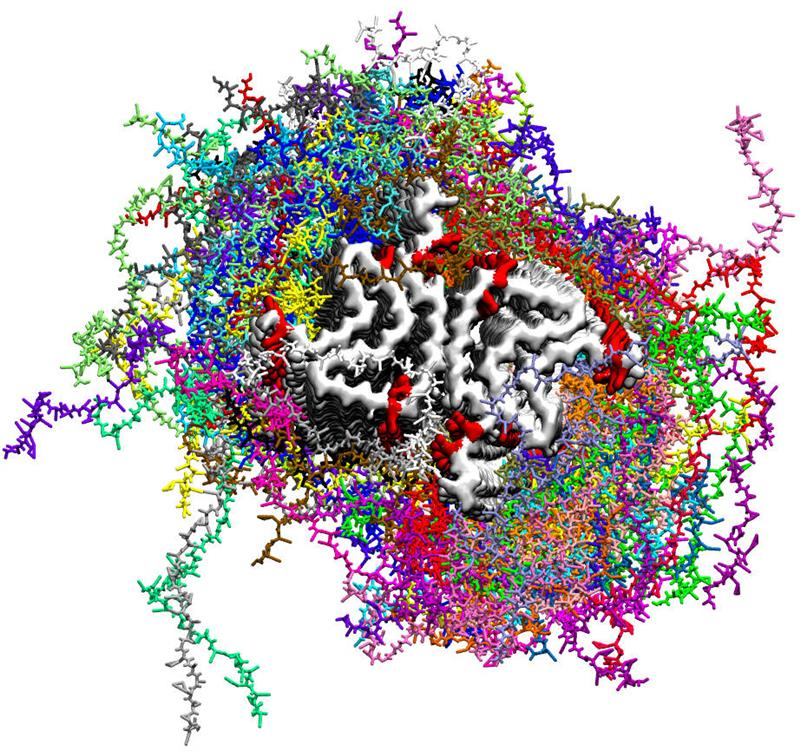Disordered Proteins and Their Ensembles: Fundamental Principles and Biological Engineering
 Intrinsically disordered regions (IDRs) in architectural and signaling proteins play significant roles in biology and disease processes including neurodegenerative disorders and cancer. Tremendous progresses have been made in our understanding of how IDRs regulate cellular information processing across scales, including signaling, transcription, stress response, DNA repair, genome organization, and RNA processing. Further, IDRs are now widely recognized as major drivers and modulators of biomolecular condensates, which are phase-separated hubs that are believed to play important roles in the compartmentalization of biochemical processes in cell. Mutations in IDRs have been shown to result in dysregulation of signaling events in the cytoplasm and activation of oncogenic transcriptional programs in the nucleus, as well as aberrant behaviors of condensates.
Intrinsically disordered regions (IDRs) in architectural and signaling proteins play significant roles in biology and disease processes including neurodegenerative disorders and cancer. Tremendous progresses have been made in our understanding of how IDRs regulate cellular information processing across scales, including signaling, transcription, stress response, DNA repair, genome organization, and RNA processing. Further, IDRs are now widely recognized as major drivers and modulators of biomolecular condensates, which are phase-separated hubs that are believed to play important roles in the compartmentalization of biochemical processes in cell. Mutations in IDRs have been shown to result in dysregulation of signaling events in the cytoplasm and activation of oncogenic transcriptional programs in the nucleus, as well as aberrant behaviors of condensates.
Multi-disciplinary approaches including theory and multi-scale modeling and simulations are of crucial importance for dissecting the mechanistic principles of IDR actions and subsequently targeting their aberrant behaviors in disease processes. This special issue plans to capture the current state of the art of the field and discuss key open questions and the emerging new approaches that will drive our understanding of the biophysics and biology of IDPs to newer dimensions. Given the multidisciplinary nature of the field, it is important that we bring together a variety of viewpoints on the polymer physics, biochemistry, biology, and engineering of IDPs, enabling accounting of recent progress, identification of key challenges, and inspiring collaboration among theory, simulation, and experiment.
Biophysics Reviews Editor
Priya Banerjee, University at Buffalo
Guest Editors
Jianhan Chen, University of Massachusetts, Amherst
